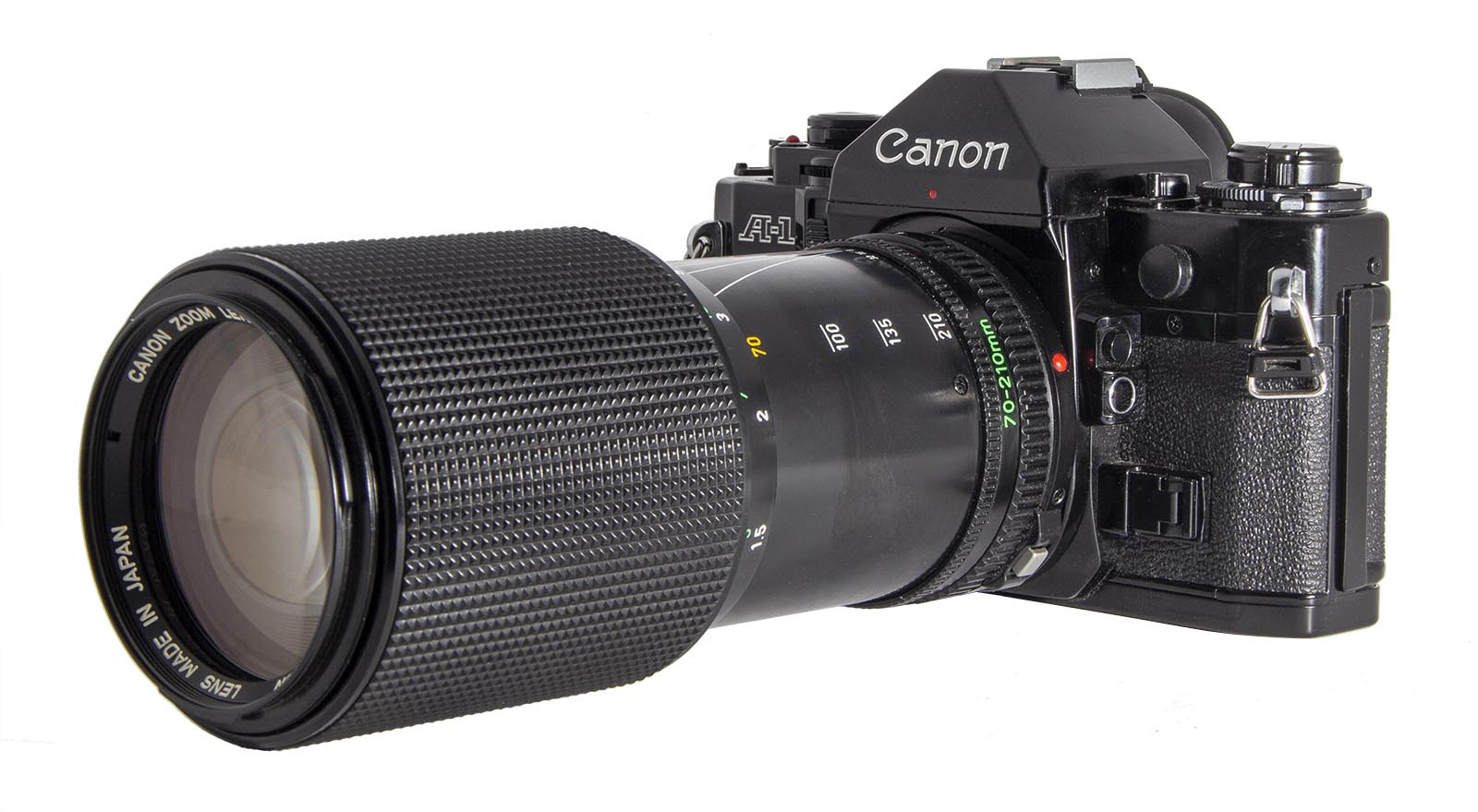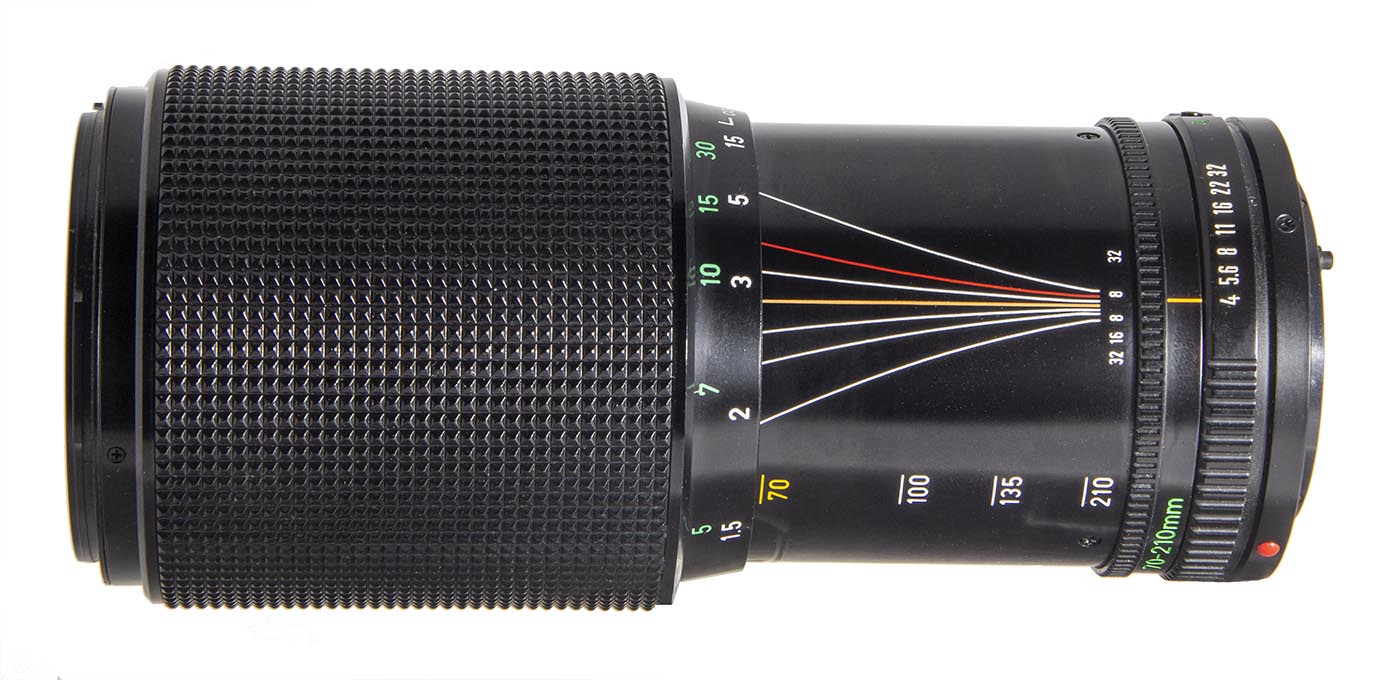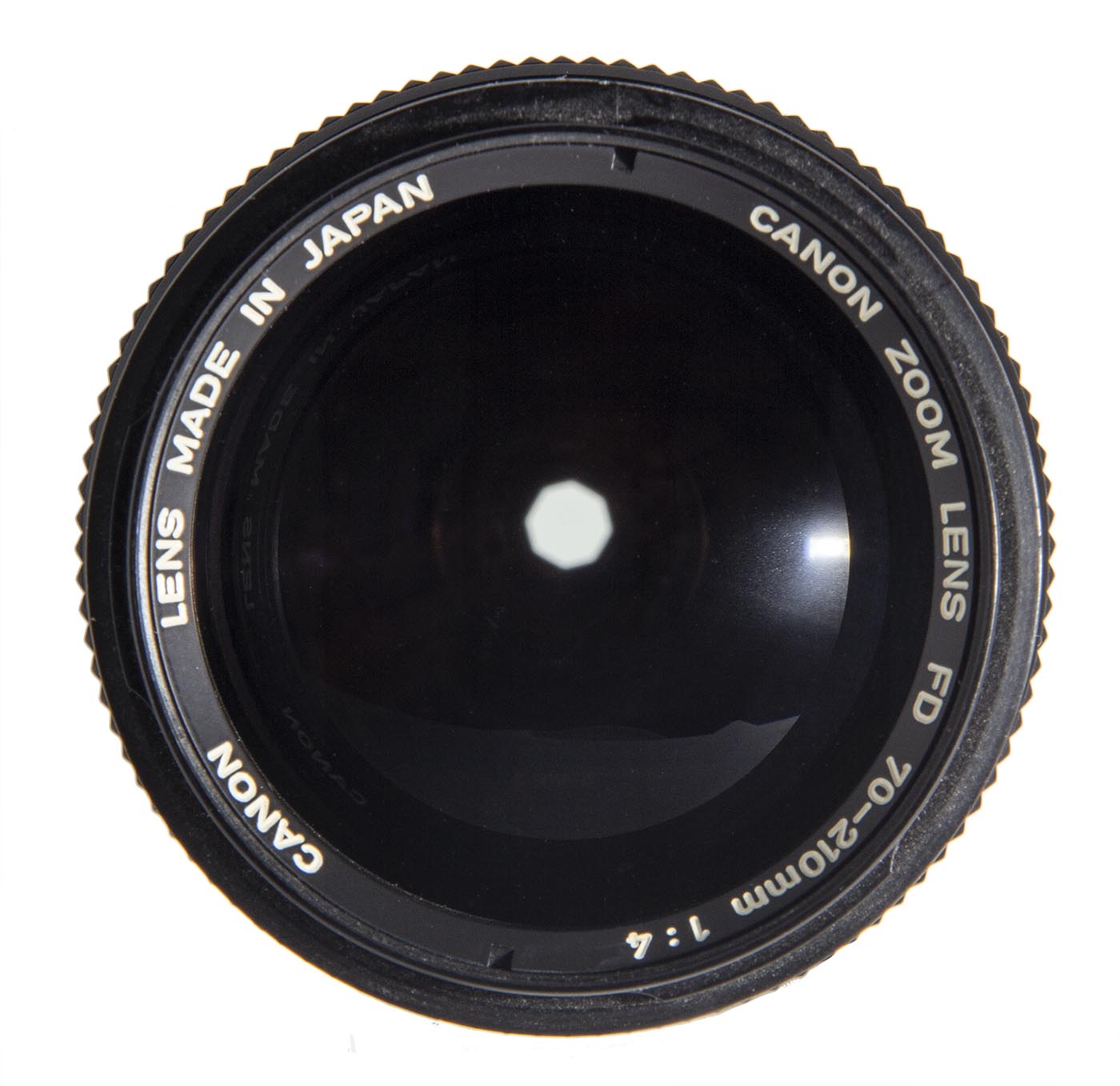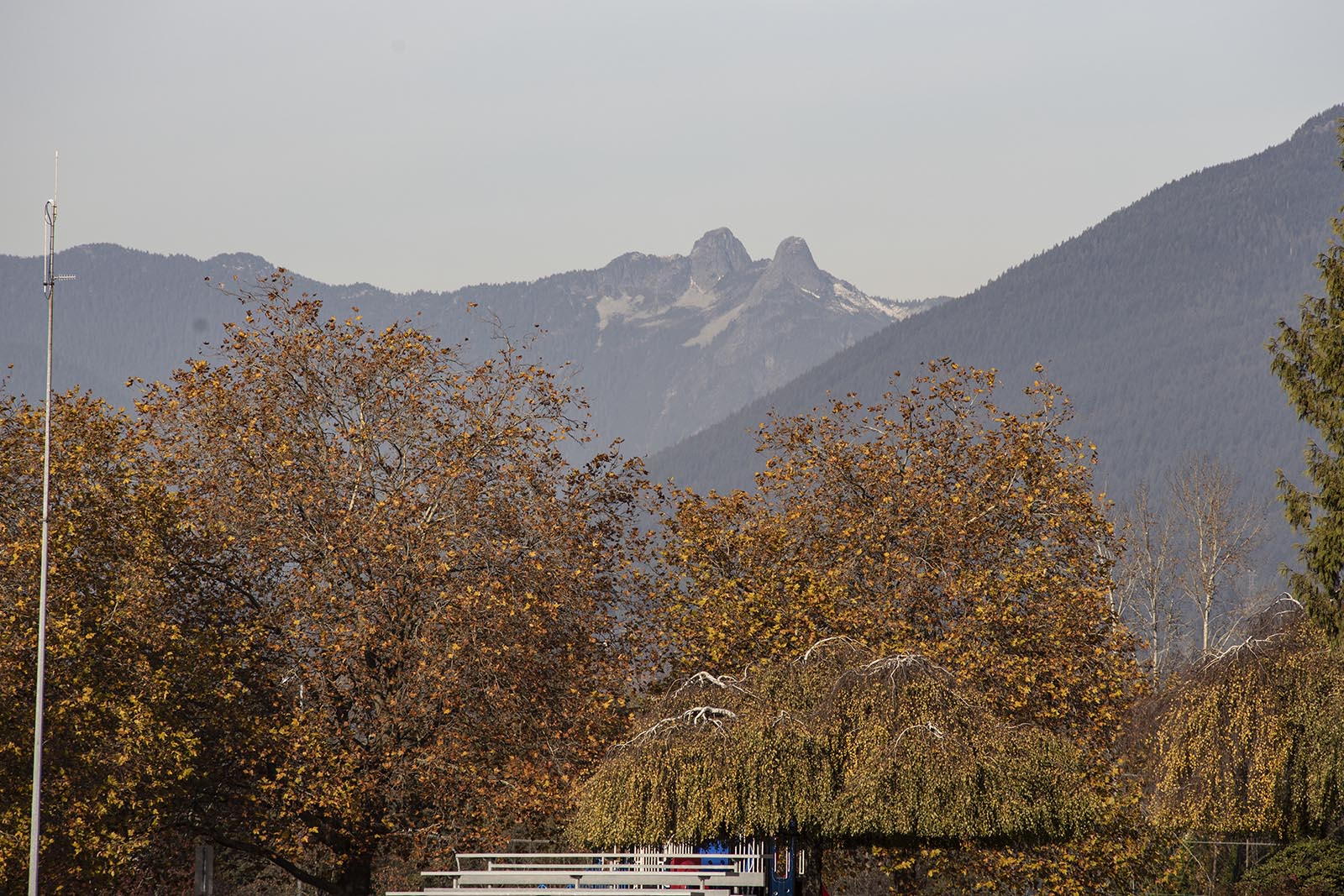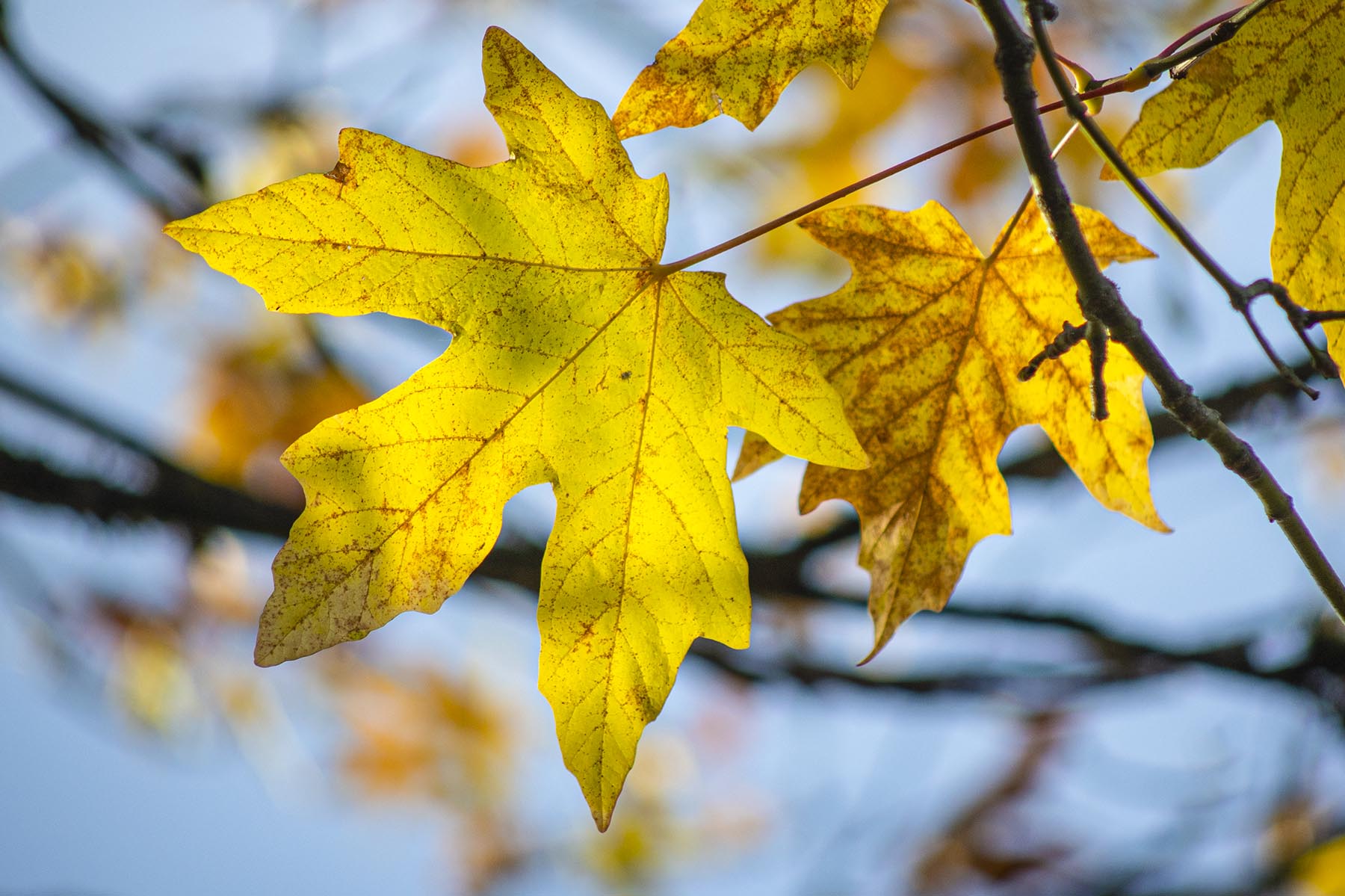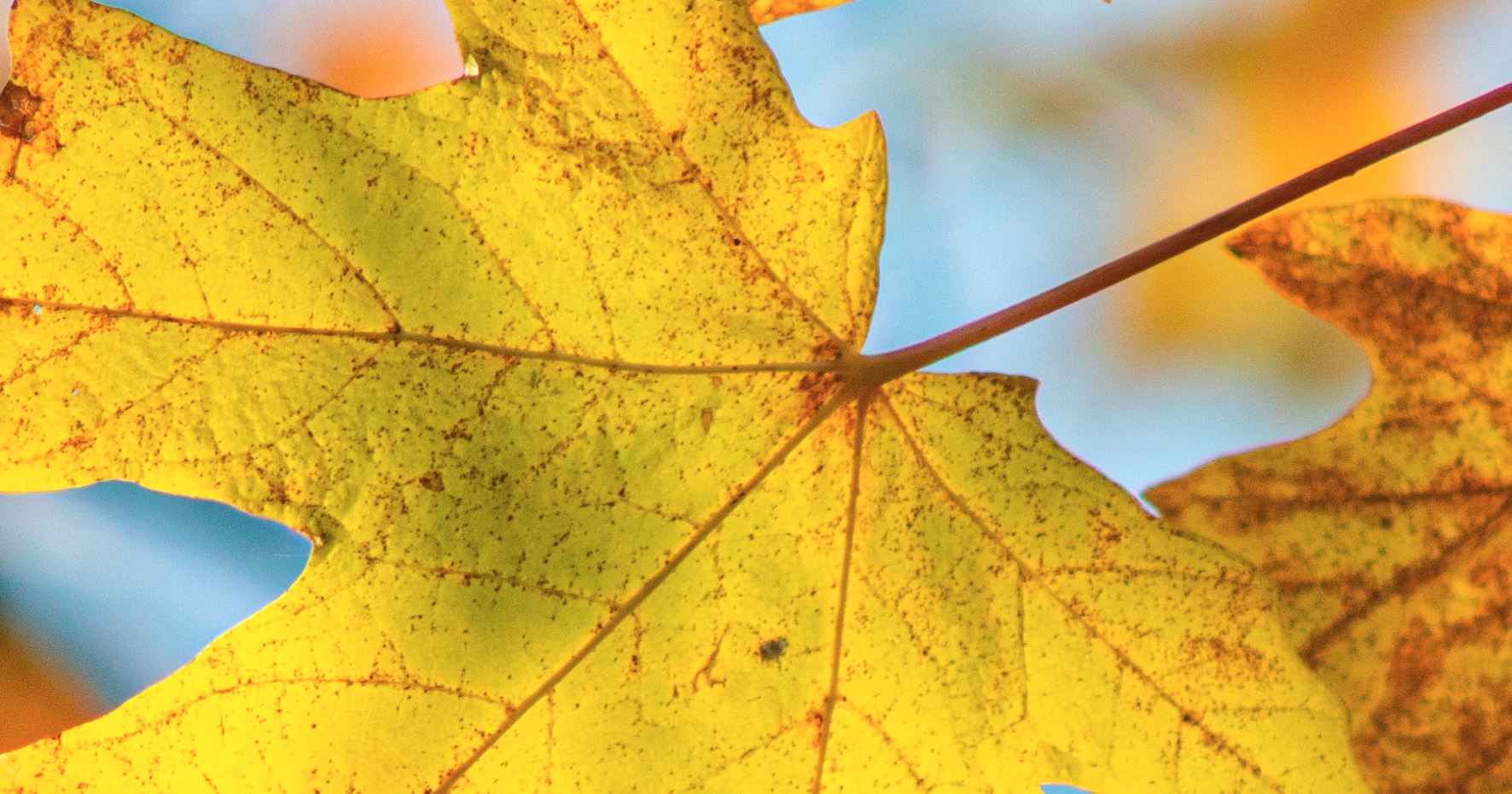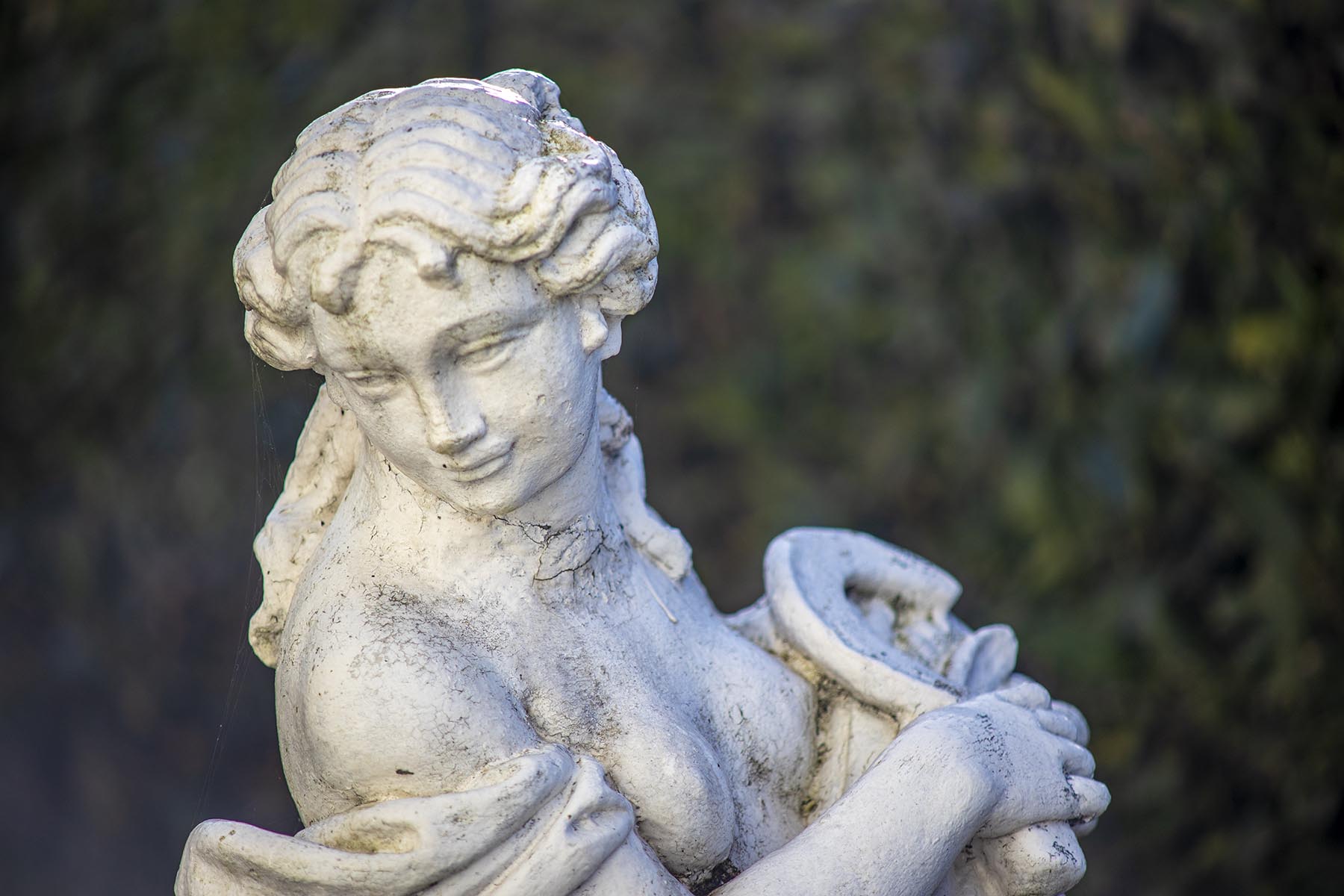Canon FDn 70-210mm f/4
The long end of the lens trinity
is the 70-210 zoom. It is an
amazingly useful lens and,
after you have used one, it
is a hard one to give up.
Canon has had a 70-210mm
lens in its lineup since this lens
was introduced in October of 1980.
There were other zoom lens such as
the FL 100-200mm f/5.6 introduced in December of 1966, and the FD 80-200mm f/4.0 introduced in October of 1976 before Canon settled into the 70-210mm zoom range as their flagship medium telephoto zoom.
This is a solid lens. For its size it is heavy and well made. Zoom control is a push pull arrangement. Some like this combined zoom/focus ring and others not so much. I find that it works well when the zoom is smooth and well lubricated. Being able to focus and zoom without having to move your hand between two rotating controls can be very fast and convenient.
Focus is by rotating the zoom ring and, unfortunately, the front section rotates as you focus making it difficult to use a polarizing filter.
At it’s introduction the then current Canon camera was the A-1, introduced in April of 1978, and they are often seen together. The lens has Canon’s multi layer S.S.C. coating although this fact is not mentioned anywhere on the lens.
In the Collection I have the following example:
Collection No.: L-201
Name: FDn 70-210mm f/4.0
Elements: 12
Groups: 9
Iris Blades: 8
Filter Diam.: 58mm
Min. Aperture: f/32
Lens Hood: BT-58
Condition: My lens is new in the original box with all of the
original packaging material. All functions are smooth like butter! The pictures below are all taken with this lens.
Shooting with the FDn 70-210mm
So, now we come to it: what is this lens like to use? As I have said, the lens is solid and heavy and has the typical feel of a Canon lens. On the camera it is small enough to be used as a walk about lens without getting overly tired unlike our modern f/2.8 equivalents. I mounted the lens on my Canon R with an FD adapter and set out for a walk. I say again, this is not a scientific test. It is just my impressions from an hour walking in the park with it.
So, here we are wide open at f/4.0 at 210mm. What jumps out is the vignetting. It is gentle and not too strong and could be easily dealt with in Photoshop, if that was necessary. Usually I am adding vignetting.
If we zoom into the f/4.0 image on the left above and look at the antenna on the left edge we get this image. This view is at 200% in Photoshop. The weather was dull overcast and the image is unmodified, unsharpened, un-anything. This is how good this lens is on the edge of the frame wide open. I was focused on the trees in the foreground so the mountains are very soft. But the antenna is about the same distance as the trees. Even at this magnification notice how well controlled the color fringing is. I really like this lens!
Well, that was interesting. Dull but interesting. But can we take a pretty picture with this lens? Well, lets have a look. All of these pictures were on the same one hour walk and I don’t pretend that they are art. But that is the great thing about this hobby: you don’t have to be great to have fun.
And here is my favourite photography model. Always willing, always smiling and she does not talk too much! Look at the line between white and the background. No color fringing. This is an impressive lens considering its age. And remember, it was designed for 35mm film and not 30 mpx sensors. For its time it was spectacualr. But then remember it is a Canon and we expect nothing less.
When I bought my Canon R ody I did not realize what a boone it would be. Suddenly all of my Canon lenses from the M-39 mounts to the EOS lenses are available to me. So to are my Canon bellows units, macro lenses, close up lenses and lens extenders. And this lens is a perfect example of what I am saying. I like this lens and will use it for casual walking around photography. It is easy to transport and I can get great images with it. And with the focus peaking feature on the Canon R the manual focus is no problem at all.
But, you be the judge. Here are the pictures. What else could you want?


